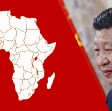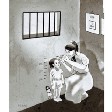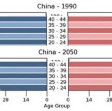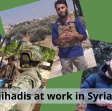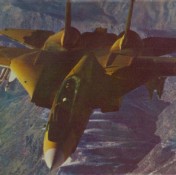Ukraine War, 2 December 2022: Air War Update, Part 4
In the Part 1 and the Part 2 of this mini-series, I’ve explained the ‘basics’ about equipment of the Russian Airspace Force (VKS) and the Ukrainian Air Force: how the Soviets and then the Russians were defining the requirements for their future combat aircraft — nowadays deployed by both air forces involved in this war — and what events of the last 40+ years have influenced this proces, as well as further development of the very core of the Soviet and then the Russian aviation industry. The reason why I’ve approached this topic from this point of view was ‘touched’ in the Part 3.
In this part, I’m going to discuss the resulting differences between capacity and capability.
CAPACITY VS CAPABILITY
Regardless how often misreported and misunderstood as such, the capacity is an entirely different pair of shoes than the capability. In the case of air power, the reason is that it doesn’t matter if the industry of one country can manufacture whatever types of aircraft, and what are these aircraft theoretically capable, if the air force of the country in question does not know how to-, does not train to-, or is not permitted to deploy these aircraft and their equipment and weapons to the maximum of their capabilities.
Ironically, when it comes to air power, there is hardly any better example for the difference between the capacity and the capability than that of the VKS.
Theoretically, this force is operating some of most capable fighter-bombers presently in operational service; big types like Su-27, Su-30, Su-34 and Su-35, powered by extremely strong and reliable engines, equipped with very powerful radars, and armed with long-range guided missiles. Theoretically, such equipment should enable the VKS to defeat the Ukrainian air power and air defences ‘with ease’. Theoretically, the VKS has the capacity.
In practice, by now it’s obvious that the VKS proved entirely unable of doing that. In practice, the VKS does not have the capability.
Ironically, problems marring this force can be described as ‘traditional’ — because they existed already decades ago and, despite several attempts at reform, were never ironed out.
SERDYUKOV REFORMS
In earlier parts I’ve described how Putin ‘merged’ all the Russian companies involved in production of aircraft and related equipment into the OAK, back in 2006. This decision was a part of a major reform initiated by him and then by Anatoly Serdyukov, the man he appointed the Minister of Defence, less than a year later. The primary aim of that reform was to streamline the bloated command structure left over from the Soviet times. The industry was meant to flourish thanks to improved control and less mutual competition, while Armed forces were to become modern, lean, quick-reacting and combat-ready….
At the first look, and before soon, the VKS appeared to profit immensely from this reform: it began receiving an entirely new generation of combat aircraft with much improved capabilities and performances, and its crews — which were flying 20–40 hours a year for most of the previous 15–20 years — were granted enough funds, spares, and fuel to fly up to 80–120 hours a year. Indeed, so much so that there were reports about them receiving serious tactical training again. After decades of degeneration and a life in shame following the dissolution of the USSR, its members were proud of themselves, their service and their aircraft.
However… as it became obvious at least during the Russian military intervention in Syria, the VKS did very little in terms of developing its doctrine and tactics, improving the quality of its leadership, and operational prowess. Yes, sure, it was the primary branch of the Russian armed forces deployed there; it campaign of intentional targeting of civilians definitely dominated related reporting in the media for almost two years, too. However, and just like at the times of the Soviet Union, it received no autonomous, but only supportive role; granting its commanders with the right to make autonomous decisions remained an anathema, and all the decision-making remained reserved for higher ranks — especially the GenStab.
The reason was that it was already back in 2007 that the GenStab put up fierce resistance at all of Serdyukov’s reform attempts — and this, primarily, because the GenStab and all the top ranks of the Russian Armed Forces, were endemically corrupt, just like since the Czarist times…
THE LAST (?) VICTORY OF THE RED MAN
The ‘list of reasons’ for GenStab’s opposition to Serdyukov was really ‘endless’. Generals considered it an ‘insult’ he was a ‘civilian’. The GenStab was disgusted when Serdyukov brought in a team of civilian accountants to control the defence budget (foremost because ever growing parts of that budget were disappearing without a trace). The GenStab was furious over the work of Serdyukov’s accountants ‘causing problems’ to a ‘number of young and promising officers’, all of whom were sacked for corruption (and then so much so, Putin had to pardon all of them, and stop all further prosecutions of that kind). The GenStab was aghast when Serdyukov launched his effort to liquidate 30% of the central administration and to halve the number of active officers, not to talk about his efforts to transform the armed forces from a mass-mobilisation army to a small professional force…. By 2012, tensions reached such proportions that Putin was left without a choice but to replace Serdyukov with Shoygu (supposedly because of Serdyukov’s ‘corruption’….indeed, he was then sentenced, but pardoned too, already in 2015….): actually, I have no doubts that ‘somebody there’ told Putin that otherwise he’s going to face a military coup d’état…
Arguably, Shoygu was not popular with the GenStab either: he was no military officer. However, to secure Putin’s and thus his own position and avoid trouble, he first revoked many of Serdyukov’s reforms — which wasn’t a big problem: due to ‘bureaucratic resistance’, most of these were never realised. As next, he re-instated Soviet military traditions in the VSRF, re-established some of Army’s divisions, and retained the position of the VKS as a mere administrator of air power: operationally, the air force remained subjected to the control of the ground forces and the GenStab.
VKS: ADMINISTRATIVE BODY
Since Serdyukov’s reforms, and then Shoygu’s ‘counter-reforms’, the VKS is exercising direct control only over the Long Range Aviation units (those equipped with Tupolev Tu-95 and Tu-160 bombers), and Military Transport Aviation. Its tactical arm, the Frontal Aviation (equipped with fighter-bombers and attack aircraft), and the Army Aviation ( equipped with attack, assault and transport helicopters) — remained operationally subordinated to the Joint Strategic Commands (OSKs), the headquarters of which are always dominated by Army officers.
Result? No matter what kind of ‘super-turbo-Wunderwaffen’ is the VKS receiving in form of Su-30s, Su-34s, and Su-35s, it was never meant, never trained, and thus never made to do more with these but to deploy them on order from ground forces, and in support of ground forces. Improved capability didn’t matter to the generals of the GenStab: capacity — and what some of Russian military officers are openly calling the ‘Spirit of the Red Man’, while academics tend to call the ‘Homo Sovieticus’ — did.
BACK TO OLD PRACTICES
Shoygu’s counter-reforms went as far as to make sure that the ‘traditional’, stolid conservativism and safety continued afflicting the tactics and thus the training of the VKS. Essentially, principal concern of every Russian unit-commander is NOT to lose any aircraft or crews. That is the ‘Rules №1–100’ and thus dominating all issues related to routine training and exercises. Therefore, all the training is conducted in fashion ‘making sure’ that no aircraft are going to be lost…. at least not due to regimental- or squadron-commander’s orders.
Unsurprisingly, already by 2014–2015, everybody was back to the times of ‘training norms’ and ‘standards’: to gradual, slow, repetitive build-up of skills of pilots and their crews — as well-known from the Soviet times. Along such practices, it takes between 8 and 12 years to fully qualify a pilot/crew, and the mass of these are spending most of their flight time flying circles within visual distance form their air bases (and even then: all are strictly prohibited from flying into clouds). Exceptions were (or still are) transfer flights, which are always supported by a ‘pathfinder’, in form of a transport carrying a specially trained navigator.
Although the total number of flight hours per pilot/crew a year remained at around 80–100, tactical exercises were back to minimum and always heavily prescribed: crews could experience no surprise by unexpected opponents, for example. Dissimilar air combat training (i.e. air combat training between different aircraft types, and especially types mimicking aircraft flown by potential opponents) was limited to bare minimum: if undertaken, then it’s involving top ranks of the regiment only.
Talking about air combat training is bringing me to the perhaps ‘best’ example of negative consequences: while — after being subjected to 20+ years of related PR-nonsences and fanboyism — many in the West always think about Su-34 as a ‘multirole fighter-bomber’, indeed a type that could, say, fly a long-range air strike with help of PGMs, while protecting itself from enemy interceptors with help of air-to-air missiles, the GenStab taught the VKS to think about it as a bomber, and bomber only. Replacement for Su-24, and little else.
Correspondingly, until this very day, the Russian Su-34-crews are trained along the tactical manual for bombers. When a few Su-34-crews complained about lacking training in deployment of even R-73 short-range air-to-air missiles for self-defence purposes, somebody up the chain of command, literally, ‘gave them a few to play with’. And that was that: the GenStab insisted on the tactical manual to remain the same.
(Is a reason why I wonder: why are the RT and Red Star TV nowadays shown any of Su-34s carrying R-73s, R-27s, or even R-77s? Their crews have next to no clue how to deploy them…. which in turn stipulates the release of videos staged, literally, ‘for public consumption’ — as nearly everything of that kind in Putin’s Russia.)
ATMS
By around 2014–2015, and with help of advanced technologies, the GenStab aimed to curb any kind of autonomy of, for example, regiment-, squadron-, or flight commanders of the VKS. Instead, it aimed (and, apparently: still aims) to further centralise the command and control with help of automated tactical management systems (ATMS): to enable its generals to run the battle per remote control.
How’s that working?
The general in the headquarters has his own computer; the combat aircraft its own. The two computers are connected with help of a data-link. Thus, the general enters the coordinates of the target, and transmits this to the weapons system of the selected fighter-bomber (or, more often: to the computer of the A-50 airborne control aircraft, which is then forwarding it to the selected fighter-bomber). The crew of the Su-34 needs not doing anything at all: it only serves the purpose of monitoring the work of the aircraft’s weapons system. The rest is done, literally, ‘on auto pilot’.
‘Works miracles’, or at least so they expected. Well, when tested for the first time in combat, in Syria of 2015–2016, it didn’t work at all. If for no other reason, then because it turned out that there were too few forward air controllers (FACs; also known as JTACs in the West), deployed with the force, and far too few reconnaissance UAVs. With other words: Generals haven’t got enough coordinates to forward to their aircraft.
Then the UAVs and FACs were brought in, only to find out they can’t work properly without extensive support of differential GLONASS-stations: the coverage of Syria by the Russian satellite navigation system was much too poor — and even if: it takes differential stations and similar equipment to make it precise enough for military purposes.
After about 40 such stations were installed to cover a frontline of 50 by 50 kilometres, it turned out the idea is good, but the software poor, and the aircraft were equipped with dumb bombs only, which were missing something like 98% of time…which in turn meant the VKS often had to re-attack the same target by 90+ times in order to score a direct hit, while the IT-companies at home were ordered to write new software…
Eventually, the massive application of air power against civilians in Syria ‘worked’ — because Syrian civilians were not protected by any kind of serious air defences. The VKS suffered very few losses, and most of these were self-inflicted.
On the contrary: when the ‘tactics’ developed by the GenStab for the VKS was applied in Ukraine, earlier this year…. sufficient to say the air force ended ‘shorter’ by more than a squadron-worth of Su-34s, and that before soon. This, not only because of ‘bomb these coordinates, that’s a direct order, and if you miss, re-attack again, and again’-tactics, but also because the GLONASS-coverage of Ukraine is anything than ideal, and because the Russians are jamming the GPS-coverage so severely, that this is disturbing the work of hand-held GPS-receivers used by many of VKS-crews…
….yup, air warfare is a complex- and ‘very technical’ issue… easily makes people fall asleep. That’s why more in this regards is going to be described in the next part of this mini-series.

